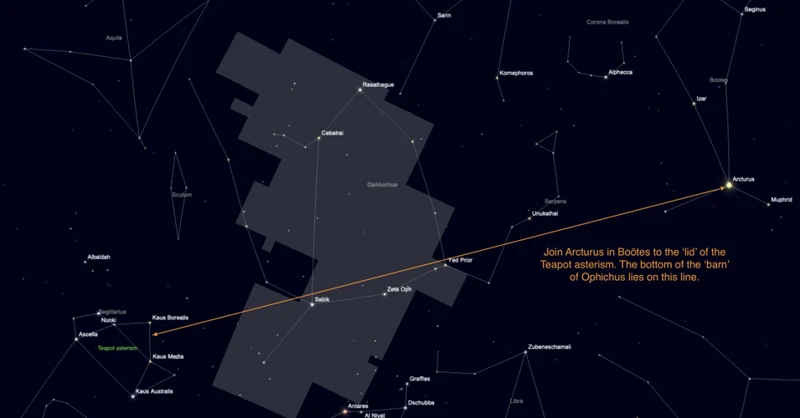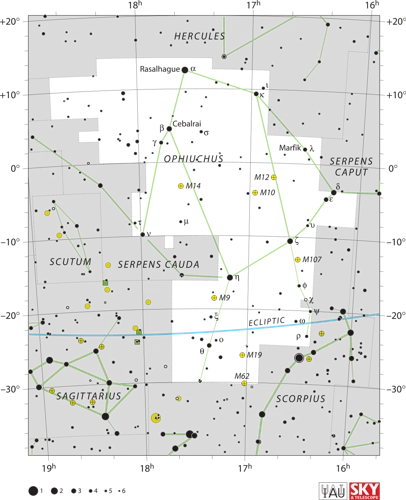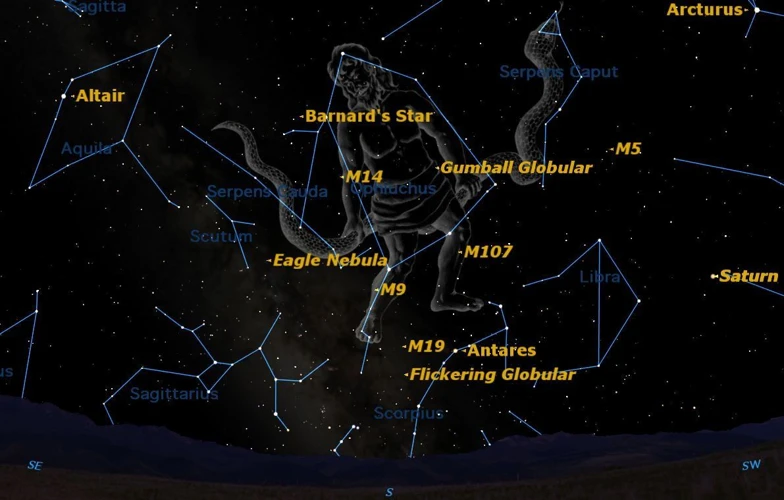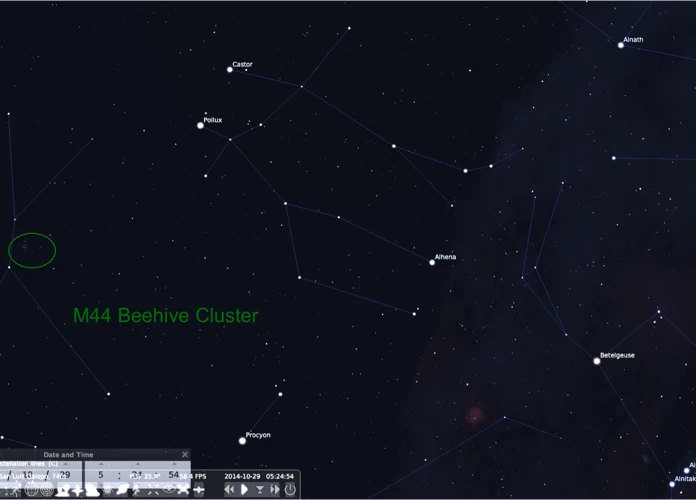The Marvels of Bootes: Unveiling the Herdsman in the Northern Sky
Welcome to a mesmerizing journey through the celestial wonders of Bootes, a constellation that graces the northern sky with its enchanting presence. Join us as we delve into the captivating legend behind this celestial figure, explore the bright stars that form the constellation, and unravel the mysteries of the deep space objects nestled within its boundaries. Additionally, we will uncover the mythological and cultural significance that Bootes holds across various civilizations. So, let us embark on this celestial adventure, where ancient tales, astronomical marvels, and cultural connections intertwine to illuminate the extraordinary world of Bootes.
The Legend of Bootes

Bootes, also known as the Herdsman, is steeped in ancient mythology that adds an air of mystique to this celestial figure. According to Greek mythology, Bootes represents a legendary figure named Icarius. Icarius was a skilled farmer who was gifted with the secret of making wine by the god Dionysus himself. Excited by the discovery, Icarius enthusiastically shared his knowledge with the local villagers, bringing joy and merriment to their lives. The grateful villagers, however, consumed the wine excessively and fell into a deep sleep. They awoke the next morning with throbbing heads, mistaking their disorientation for the effects of poison. In a fit of rage and misunderstanding, they brutally murdered Icarius. Heartbroken, Dionysus immortalized Icarius as the constellation Bootes, forever shining in the night sky. This tragic tale serves as a reminder of the dangers of excess and the consequences of misunderstanding. The story of Icarius and Bootes is just one example of the rich tapestry of legends interwoven with the constellations of the northern sky, each telling its own unique tale of heroism, sacrifice, and celestial marvels.
The Herdsman Constellation

The Herdsman constellation, Bootes, is an awe-inspiring sight in the northern sky. It is comprised of several notable bright stars that form a distinctive shape resembling the outline of a herdsman with a long outstretched arm. One of the prominent stars within the constellation is Arcturus, a beacon of light that holds the title of being the fourth-brightest star in the entire night sky. Other notable stars include Nekkar, Seginus, and Izar. Bootes is positioned between the constellations of Ursa Major and Virgo and can be easily identified by its recognizable shape. Its position in the night sky renders it visible in the late spring and early summer months in the northern hemisphere. The Herdsman constellation invites stargazers to marvel at its beauty and contemplate the stories and myths that surround this celestial figure. Whether connecting the dots between constellations like Perseus and Andromeda (learn more), Gemini (learn more), or Cassiopeia (learn more), Bootes invites us to ponder the wonders of the cosmos.
1. Bright Stars in Bootes
Bootes is home to several bright stars that contribute to its celestial beauty. One prominent star in the constellation is Arcturus, which holds the distinction of being the fourth-brightest star in the entire night sky. Its name, derived from the Greek word for “Bear Watcher,” signifies its close proximity to the constellation Ursa Major, also known as the Great Bear. Arcturus shines with a warm orange-yellow glow, captivating stargazers with its radiant presence. Another notable star in Bootes is Nekkar, a yellow giant star that adds to the constellation’s luminosity. Its name originates from the Arabic word for “the driver,” alluding to its position as the herdsman’s lead star. Beyond these stellar highlights, Bootes boasts an array of other brilliant stars like Seginus, Mufrid, and Izar. Each of these stars enhances the splendor of Bootes, ensuring that it remains a captivating sight in the northern sky.
2. Bootes’ Position in the Sky
Bootes, the Herdsman, is a prominent constellation located in the northern sky. It can be easily identified by its distinct shape and position relative to other constellations. Here are some key details about Bootes’ position in the sky:
1. Right Ascension and Declination: Bootes is situated between the celestial coordinates of 13 to 16 hours of right ascension and 15 to 55 degrees of declination. This places the constellation within the boundaries of the northern celestial hemisphere.
2. Neighboring Constellations: Bootes is surrounded by several other well-known constellations, creating an intriguing celestial neighborhood. To the west, we find Corona Borealis, also known as the Northern Crown, which forms a beautiful arched shape. In the east, there is Ursa Major, the Great Bear constellation, home to the famous Big Dipper asterism. And to the south, we have Virgo, the Maiden, another significant constellation of the zodiac.
3. Circumpolar Observer’s Advantage: One interesting aspect of Bootes’ position is that it is visible to observers located in both the northern and southern hemispheres. However, it is more prominent and easier to observe from latitudes in the northern hemisphere. For skywatchers in the northern latitudes, such as those in Europe, North America, and parts of Asia, Bootes can be seen year-round and even appears to rotate around the North Star, Polaris, without ever setting below the horizon.
The strategic position of Bootes in the sky, surrounded by neighboring constellations and visible to observers in both hemispheres, makes it a celestial marvel worth exploring and admiring. Its captivating presence adds to the awe-inspiring beauty of the celestial tapestry above us.
Deep Space Objects in Bootes

Bootes not only mesmerizes us with its mythological origins but also captivates astronomers with its deep space objects. One of the intriguing features within Bootes is the Bootes Void, a cosmic region that forms a vast expanse of seemingly empty space. Stretching over 250 million light-years in diameter, this void is a cosmic enigma, as it contains significantly fewer galaxies and other celestial structures compared to neighboring regions. Scientists continue to study this mysterious void, hoping to unravel the secrets of its formation and the forces responsible for its unique characteristics. Additionally, Bootes is home to numerous galaxies that sparkle in the vastness of space. These galaxies vary in size, shape, and distance, offering astronomers a glimpse into the diverse nature of our universe. From spiral galaxies adorned with graceful arms to elliptical galaxies with their smooth and curving forms, exploring the galaxies within Bootes reveals the immense beauty and complexity of our cosmic neighborhood. Humanity’s fascination with deep space objects within Bootes continues to inspire astronomers to delve deeper into the far reaches of our universe, pushing the boundaries of our understanding of the cosmos.
1. The Bootes Void
The Bootes Void, also known as the Great Void or the Supervoid, is an astronomical marvel that intrigues scientists and stargazers alike. It is a vast, nearly spherical region in the northern sky that appears to be devoid of galaxies and other visible matter. Spanning roughly 330 million light-years in diameter, this cosmic void presents a perplexing mystery that challenges our understanding of the universe.
Scientists first discovered the Bootes Void in the 1980s while studying large-scale structures in the cosmos. What makes this void truly remarkable is its sheer size and the scarcity of galaxies within its boundaries. The exact cause of this phenomenon remains a topic of scientific debate. Some theories suggest that the Bootes Void may have originated from the gravitational influence of nearby galaxy clusters, causing matter to be gravitationally repelled from the region. Others propose that it could be a result of quantum fluctuations during the early stages of the universe’s formation.
Regardless of its origin, the Bootes Void offers a fascinating glimpse into the vastness and complexity of our universe. Its existence challenges our perception of how matter is distributed across space and raises questions about the interplay between gravitational forces and cosmic expansion. Further research and observations are ongoing to unravel the secrets held within this enigmatic void and to deepen our understanding of the cosmic web in which it resides.
To put the scale of the Bootes Void into perspective, imagine a list of the nearest galaxies to our Milky Way. Typically, this would include the Andromeda Galaxy, the Triangulum Galaxy, and other nearby celestial bodies. However, in the vicinity of the Bootes Void, this list appears remarkably empty. The void’s vast expanse is a striking testament to the enormity of the universe and the mysteries that lie beyond our comprehension. It serves as a vivid reminder of how much more there is to discover and understand about the celestial wonders that surround us.
2. Galaxies in Bootes
Bootes harbors a fascinating array of galaxies within its boundaries, offering astronomers and stargazers alike a glimpse into the vastness of our universe. One notable galaxy found in Bootes is NGC 5248. This spectacular spiral galaxy showcases beautiful, sweeping arms adorned with pockets of young, bright stars. Its proximity to Earth allows for detailed observations and has made it a subject of scientific study. Another remarkable galaxy in Bootes is NGC 5676. This lenticular galaxy boasts a unique shape, appearing as a blend of an elliptical and spiral galaxy. With its distinctive dust lanes and a central bulge, NGC 5676 intrigues astronomers, inviting them to uncover its secrets. The Bootes cluster, a galaxy cluster located within the constellation, boasts several galaxies of varying shapes and sizes. From massive elliptical galaxies to smaller, irregular ones, the Bootes cluster showcases the diverse nature of galactic formations. Exploring the galaxies within Bootes opens windows to far-off cosmic landscapes, each with its own captivating beauty and astronomical wonders.
Mythological and Cultural Significance
Mythological and cultural significance surrounds the constellation Bootes, captivating the imaginations of people across various civilizations. In Greek mythology, Bootes is associated with the herdsman Icarius, as we learned earlier. However, other cultures also have their own interpretations. In Hindu mythology, Bootes is believed to represent the sage Ved Vyasa, who is revered as the author of the ancient Indian epic, the Mahabharata. The Aboriginal people of Australia see Bootes as a part of their celestial mythology, with the constellation symbolizing a man named Yurree, a hunter responsible for bringing fire to the people. The Native American culture perceives Bootes as a great bear hunter, while the Inuit people view it as a meat rack where the hunted animals are left to dry. These diverse interpretations showcase the universal human fascination with the night sky and the stories we weave to make sense of it. Whether a herdsman, a sage, a hunter, or a provider of fire, Bootes continues to leave an indelible mark on the mythologies and cultures around the world.
1. The Herdsman in Greek Mythology
In Greek mythology, Bootes, the Herdsman, plays a significant role in various tales and legends. One of the most prominent stories involving Bootes is his association with the constellation Ursa Major, also known as the Great Bear. According to the myth, Bootes was in love with Callisto, a beautiful nymph who was also a follower of the goddess Artemis. However, Zeus, the king of the gods, was also captivated by Callisto’s beauty and seduced her. When Artemis discovered Callisto’s pregnancy, she transformed her into a bear as punishment. Years later, Callisto, now in the form of a bear, encountered her son Arcas while he was hunting. Unaware that the bear was actually his mother, Arcas prepared to strike her with his spear. To prevent such a tragedy, Zeus intervened and transformed both Callisto and Arcas into constellations — Ursa Major, the Great Bear, and Bootes, the Herdsman. They were forever positioned in the sky, with Bootes eternally chasing after the Great Bear, as depicted by their arrangement in the night sky. This poignant mythological tale showcases the enduring presence of Bootes in Greek mythology and adds to the celestial allure of the constellation.
2. Bootes in Different Cultures
Bootes, the Herdsman constellation, holds significance not only in Greek mythology but also in various cultures across the world. In Hindu mythology, Bootes is associated with the sage Yajnavalkya, who was renowned for his wisdom and teachings. In Chinese astronomy, this constellation is considered part of the Purple Forbidden enclosure, which holds great importance in their celestial system. The Hindu and Chinese cultures are just a glimpse into the wide array of interpretations given to Bootes. In Native American culture, Bootes is often associated with the concept of a hunter or a warrior, embodying the qualities of strength and courage. In Maori culture, Bootes is referred to as “Te Hetapuhi” or “The Planter,” symbolizing the planting and harvest seasons. These diverse cultural interpretations highlight the universal fascination with the night sky and its ability to inspire unique stories and beliefs across the globe. Bootes, with its prominent position in the northern sky, continues to captivate people from different cultures, reminding us of the shared wonder and awe that the stars evoke in all of us.
Conclusion
In conclusion, Bootes, the Herdsman, is a constellation that captivates us with its legend, astronomical wonders, and cultural significance. The tale of Icarius reminds us of the power of knowledge and the unforeseen consequences that can arise from its misuse. As we gaze at the bright stars that form Bootes, such as Arcturus and Izar, we are reminded of the beauty and vastness of our universe. The deep space objects within Bootes, such as the enigmatic Bootes Void and the countless galaxies that dot its expanse, continue to intrigue astronomers and spark curiosity about the nature of our cosmos. Furthermore, the mythological and cultural connections surrounding Bootes highlight the universal human fascination with the night sky, transcending borders and time. From Greek mythology to different civilizations around the world, Bootes emerges as a symbol of heroism, sacrifice, and the enduring human quest for knowledge and understanding. So, the next time you gaze upon Bootes in the northern sky, let its marvels inspire you to explore the cosmos, seek wisdom, and appreciate the rich tapestry of myths that have shaped our understanding of the universe.
Frequently Asked Questions
1. How did the constellation Bootes get its name?
The name “Bootes” is derived from the Greek word for “herdsman.” The constellation was named after a legendary figure named Icarius, who was transformed into the constellation as a tribute to his tragic fate.
2. What are some prominent stars in the constellation Bootes?
Bootes boasts several bright stars, including Arcturus, which is the fourth brightest star in the night sky. Other notable stars in Bootes include Nekkar, Seginus, and Izar, each adding to the celestial beauty of the constellation.
3. Where can The Herdsman constellation be located in the sky?
Bootes can be found in the northern sky, nestled between the constellations of Ursa Major and Virgo. It is recognizable by its distinctive kite-like shape, formed by the combination of its bright stars.
4. What is the significance of the Bootes Void?
The Bootes Void refers to a cosmic anomaly—an enormous region within the Bootes constellation where very few galaxies are found. It has intrigued astronomers and cosmologists, leading to numerous theories about its formation and existence.
5. Are there any galaxies located within the Bootes constellation?
Yes, Bootes is home to several galaxies, including the famous NGC 5248, also known as the “Lost Galaxy.” Other notable galaxies in Bootes include NGC 5676 and NGC 5921, each showcasing the beauty and vastness of our universe.
6. What is the mythological significance of Bootes in Greek mythology?
In Greek mythology, Bootes represents Icarius, a farmer who was tragically killed by the villagers he had shared his knowledge of winemaking with. The constellation serves as a memorial to his story and the dangers of misunderstanding and excess.
7. How does Bootes play a role in different cultures?
Bootes is not only prominent in Greek mythology but also features in other cultures. In ancient Egyptian mythology, Bootes was associated with Osiris, the god of the afterlife. In Hindu mythology, it is linked to the sage Pulastya, one of the ten Prajapatis who helped create the universe.
8. Can Bootes be seen from both the Northern and Southern Hemispheres?
While Bootes is primarily visible from the Northern Hemisphere, portions of the constellation can also be observed from the Southern Hemisphere, particularly in lower latitudes close to the equator.
9. Are there any famous myths or stories associated with Bootes?
Aside from the tragic tale of Icarius, Bootes is not as heavily featured in myths as some other constellations. However, its connection to other celestial figures, such as Ursa Major, Gemini, and Cassiopeia, often intertwines their stories and adds to the richness of the mythology surrounding Bootes.
10. Can Bootes be seen with the naked eye?
Absolutely! Many of the stars in the Bootes constellation are visible to the naked eye, especially the bright star Arcturus. On a clear night, away from city lights, you can spot Bootes and appreciate its celestial beauty.








